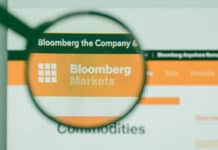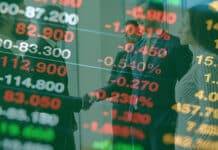
One of the greatest advantages to ETFs is their liquidity. In fact, even when there isn’t a great volume of ETFs being traded on the exchange at a point in time, the ‘open-ended’ nature of ETFs mean that they should still be at least as liquid as the underlying securities that are held within them.
Why ETF liquidity is essential?
Liquidity refers to the ability to purchase and sell an asset quickly. Being able to buy and sell assets at will is particularly important during volatile times, where an investor may wish to make a quick decision without being constrained.
In the case of shares, you can usually tell that liquidity is low when the trading volumes are limited. As ETFs look like conventional stocks in so many ways, when ETF trading volumes are limited investors often interpret this to mean the ETF is itself illiquid. But that’s not the case at all.
How ETFs are different
The key difference between an ETF and a share is that ETFs are “open-ended”. What does that mean? It means that the actual supply of ETFs can adjust in real time, according to demand. Or to put it even more simply, if demand in a particular ETF exceeds what is available ‘on-screen’ when you’re looking at the market, the ETF issuer can simply create more units to meet demand – in theory to any number and only limited by the liquidity of the underlying holdings. So, when an investor mistakes an ETF for a conventional share, and makes the assumption that a low trading volume means low liquidity, they are not taking into account this ability to easily create new units to meet demand.
How ETFs are traded
To understand the liquidity of ETFs further, it’s important to understand how they’re bought and sold across two different markets – the primary market and the secondary market.
What is the primary market?
ETFs can only be created or redeemed within the primary market, and are done so by what is termed an ‘authorised participant’. Authorised participants are typically large financial investment institutions, who have an agreement with the fund manager that issues the ETFs.
There are two ways that the authorised participant can purchase an ETF.
- The first is to simply exchange ‘cash’ to the dollar value of the ETF units, for the ETF units.
- Alternatively, the authorised participant will acquire the securities that the ETF is looking to hold, and then exchange those securities for an equivalent value of ETF units.
It is the authorised participants that create the liquidity in the market by ‘creating’ more ETF units if demand is high, or reducing the number on the market if demand is soft. The more the authorised participants monitor the ETF unit prices relative to the market, the closer the price of the ETF will remain to the underlying securities during the trading day.
[Related reading: What is an ETF?]
What is the secondary market?
The secondary market is where the end investors buy and sell their ETF units. The principal parties that these purchases are made through are called “market makers”. Market makers are responsible for offering ETF units from issuers like BetaShares on the ASX, and do so with the explicit goal of maintaining liquidity during the trading day.
Market makers make their money from what is called the ‘spread’ – a difference between the buy and sell quotations on an ETF. Market makers do not themselves have a ‘view’ on the market – they seek to remain effectively hedged, with the aim to have a net exposure to the market of zero. This is great for investors, because it means that a market maker’s biggest interest is in providing a market on both sides of the trade as far as it’s possible.
Additionally, market makers don’t have exclusive access to ETFs, and competition between them further limits the spread – keeping the investment costs competitive to the ultimate benefit of the investor. The number that you’re looking for here is the ‘iNAV’ – indicative Net Asset Value. A good trade for you is when the best bid and offer prices quoted for the ETF are close to its iNAV, because the difference between them is the profit for the market maker, and it’s the competition between them that keeps the numbers close to the NAV.
What does this all mean to me?
On the whole, ETFs are a great way to involve yourself in various markets.
As we’ve outlined above, the structure of ETFs actually makes them highly liquid, efficient and effective ways to get exposure to shares and other securities.
This article first appeared on the BetaShares website on 11 April 2017 and is republished with consent.






























